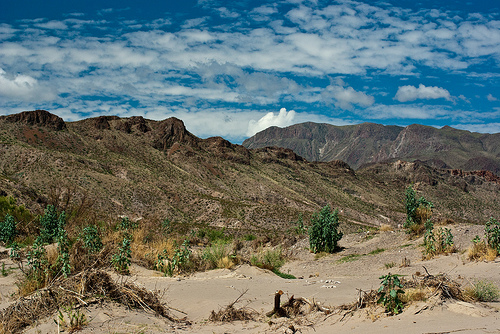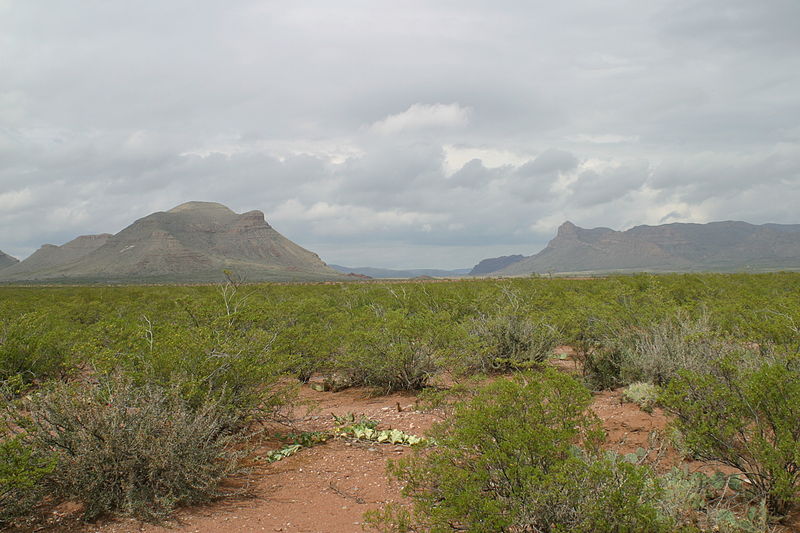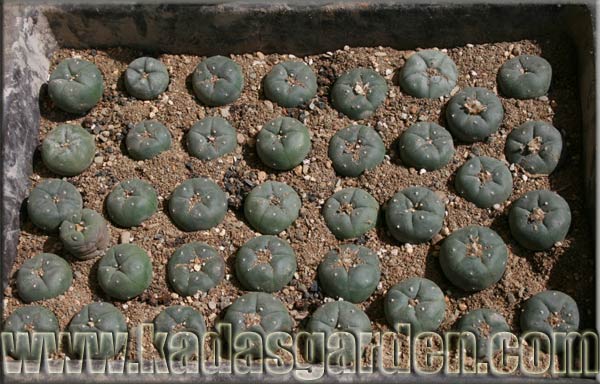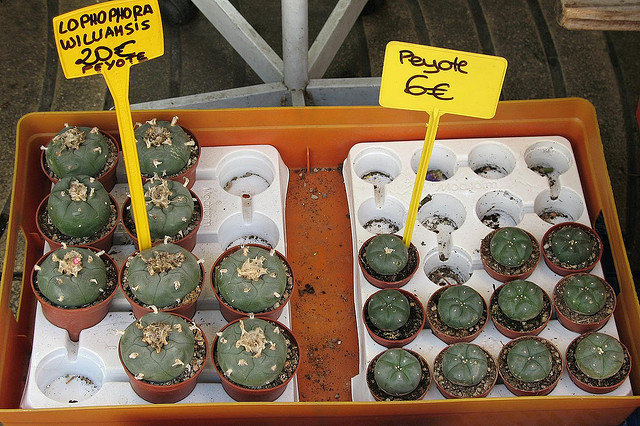Where in the world is L.Williamsii ?

What is Peyote's Natural Habitat?
Lophophora williamsii is seen most commonly in the southern portion of North America. It inhabits an area ranging from the Rio Grande area of Texas and expands south into Mexico as far as San Luis Potosi. It is particularly concentrated in the Chihuahuan Desert Region of the U.S. Mexico border. This desert is the second largest in North America with an area of 139,769 square miles. Other organisms that live in this region include prickly pear cactus, horned lizards, and coyote.
One interesting thing
about this habitat is the huge difference in
elevation from north to south. For example, the Rio
Grande region sits at approximately 150 feet. On the
other hand, you have the southern area around San
Luis where the elevation can be as high as 6000
feet!
Peyote can also be found
occupying a variety of different niches. It can be
found growing under the shade of certain shrubs. To
get more specifics, please view the
interactions
page. However, it is also found growing in open
areas with no protection from the sun of any kind.
During the rainy season, it has even been found
flourishing in silt mud flats. And to top it all
off, it had even been seen on steep limestone cliffs
sprouting from the crevices.
Where else can Peyote be found?
Because Peyote is not readily obtainable in some areas, or is otherwise hard to find people have started large commercial peyote gardens. Peyote is one of the slowest growing cacti, however through controlled cultivation it has been know to mature in 3-5 years. In addition, many growers will graft their cacti to further speed up this process. For more information on how to properly graft a cactus, you can visit Kada's Garden.
When cultivated properly,
the root top will develop a callus, and new buttons
will eventually grow from the present roots. In
order to ensure this, the cut must be made at an
angle or the root is likely to rot. This is
important because if the root is damaged the entire
plant will die. Failure to practice appropriate
harvesting techniques has led to a shortage in new
growth. People do not realize this, and they
unnecessarily take the entire root thinking it
contains something useful. This is the case in South Texas where the
peyote plant grown naturally. In some areas,
peyote has been over-harvested to the point where it
has become an endangered species. Again, this is
another reason people began turning to producing
peyote using large scale commercial operations.
Currently there are 11 registered peyoteros working
in the southern part of Texas alone. It is not
uncommon for these harvesters to sell over 200,000
peyote buttons within a year’s span. With the demand
and the price for peyote buttons increasing, these
farmers find themselves making a substantial profit.
The lands on which this peyote is grown are 90%
privately owned lands and are usually heavily gated,
and closed of to the public.
Now that you know all about the habitats peyote can be found in, visit the adaptations page to understand why it can survive in these environments, or continue to the nutrition page.
Back to home
Your content goes here.


